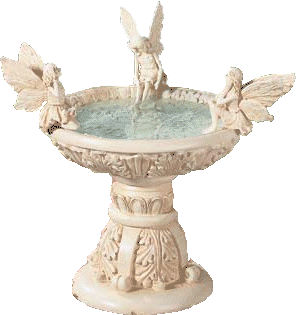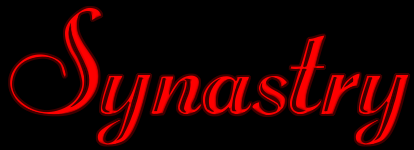


Welcome To The...





 Your Venus Type
Your Venus Type Chart Synastry
Chart Synastry Sexuality
Sexuality Planet Mars
Planet Mars Valentine's Day Page
Valentine's Day Page Venus + Mars Combinations
Venus + Mars Combinations




Your Venus Type
MORNING AND EVENING STAR: These are the names given to the two phases of the planet's cycle. In each complete cycle relative to the Sun, Venus makes two conjunctions. The first begins when the Sun and retrograde Venus meet in an inferior conjunction. The second begins at the superior conjunction when Venus is direct, and continues until the next inferior conjunction. Venus transitions between its two appearances during these periods.
PLINY THE ELDER recorded the practice of the two Venuses, "When in advance and rising before dawn [Venus] receives the name of Lucifer, as being another sun and bringing the dawn, whereas when it shines after sunset it is named Vesper, as prolonging the daylight, or as being a deputy for the moon."
SEVERAL METHODS allow for you to find your Venus phase. For the easiest method, locate the Sun in your chart. If Venus is clockwise from the Sun, your Venus phase is the Morning Star. If Venus is counterclockwise, your phase is the Evening Star. You may also determine this through the use of an ephemeris: if the Sun is further along the zodiac than Venus, then Venus is Morning, and if Venus is further along than the Sun, it is Evening.
VENUS MORNING STAR is also called Venus Lucifer or Venus Phosphoros. The individual of this phase is characterized by a spontaneous and eager emotional nature. They generally let their feelings lead the way, tending to emote first and think later, especially if their Venus rises before Mercury. These people are inclined to recover quickly from emotional disappointment.
VENUS EVENING STAR, also called Venus Hesperos, corresponds with the waning hemicycle of the lunation cycle (from Full Moon to New Moon). This phase denotes an individual of a deliberative emotional makeup, seeking to distill the meaning of experiences and ideals formulated during the first phase. Where emotions are eagerly rushed forward during the Morning period, they are now more introverted in the Evening period, though not at all less intense. Although Evening Star people may not show emotions as easily, they often tend to become more internally involved with their emotional life. These people are more likely to carry deep seated resentments. Feeling after the fact, so to say, these people may think about missed connections, bitter disappointments, or broken romances for years. However, this also manifests as a serene placing where the Morning Star is a bright blooming rose.
When misunderstandings occur, they may be explained through a sense of being out of sync. It is not unusual for this to manifest in a manner such as the Morning Star partner getting over a disagreement, while the Evening Star may require much longer to forgive. One may be angered that the other can so easily disregard a painful incident, or that it made such a minor impression; the other may be annoyed that their partner still brings up an old issue.
On the other hand, the cycle of two parts returns to itself eternally. Here there is beauty in analyzing relationships by Venus phases: a Morning and Evening Star complete the other. Two of the same type understand one another being born under the same cycle.


Then again, sometimes people rarely realize the challenge they pose to their partner. Today, people want their partner to deliver, bliss and hot sex and total agreement- or else! Or else they're out the door.
SYNASTRY, as opposed to compatability, is defined as the "coincidence or agreement of the influences of the stars over the destinies of two persons." It is the art of relational astrology, and it is an illuminating source for the interactions between people. While more complex than compatability, the results of synastry readings are as worthy and unique as our own personalities. One common method for synastry reading is the practice of creating a composite chart.


What you're doing is merging the two charts to come up with a chart of their relationship. The mathematical midpoint between the two Suns becomes the composite chart's Sun. The midpoint between the two Moons becomes the composite Moon, and so forth. Thus the composite Sun shows the purpose of a relationship; where and how the couple shine and express their vital life energy. When evaluating a relationship, pay mind to the house in your chart where your partner's sun falls. That house will be lit up and energized by your partner's solar energy. This attraction is indeed "written in the stars."
 Partner's sun in your 1st house – You immediately identify with this person. A great overlay for any relationship.
Partner's sun in your 1st house – You immediately identify with this person. A great overlay for any relationship.
 Partner's sun in your 2nd house – This person will affect your self esteem. You're likely to value them highly, and may be possessive of them.
Partner's sun in your 2nd house – This person will affect your self esteem. You're likely to value them highly, and may be possessive of them.
 Partner's sun in your 3rd house – This person will give you a lot to think about. Creative or clever ideas.
Partner's sun in your 3rd house – This person will give you a lot to think about. Creative or clever ideas.
 Partner's sun in your 4th house – Nurturing. This person will light up your home and all things domestic. They'll put you in touch with your roots. They energize you emotionally and bring light and warmth (Sun) to your home and family.
Partner's sun in your 4th house – Nurturing. This person will light up your home and all things domestic. They'll put you in touch with your roots. They energize you emotionally and bring light and warmth (Sun) to your home and family.
 Partner's sun in your 5th house – This is a fun overlay. It's like being on a date, even if you're married thirty years!
Partner's sun in your 5th house – This is a fun overlay. It's like being on a date, even if you're married thirty years!
 Partner's sun in your 6th house – This person will help you. It's good, but sort of utilitarian.
Partner's sun in your 6th house – This person will help you. It's good, but sort of utilitarian.
 Partner's sun in your 7th house – This person will seem a natural partner. They'll bring balance to your life; not that everyone wants that!
Partner's sun in your 7th house – This person will seem a natural partner. They'll bring balance to your life; not that everyone wants that!
 Partner's sun in your 8th house – I think, "symbiotic," when I see this overlay. This person will light up the dark recesses of your psyche. This couple lives (and shines) in the shadow. People are attracted and repelled. You are comfortable in uncomfortable places and are attracted to them. You deal in depth. You are intensely loyal and lack interest in anything superficial. You live for transformation via exchange of energy and thrive in the 8th house realms of death and psyche, healing and regeneration.
Partner's sun in your 8th house – I think, "symbiotic," when I see this overlay. This person will light up the dark recesses of your psyche. This couple lives (and shines) in the shadow. People are attracted and repelled. You are comfortable in uncomfortable places and are attracted to them. You deal in depth. You are intensely loyal and lack interest in anything superficial. You live for transformation via exchange of energy and thrive in the 8th house realms of death and psyche, healing and regeneration.
 Partner's sun in your 9th house – This person will open doors of all kinds for you. It's freeing and it's fun. You'll travel, literally or otherwise. You'll expand.
Partner's sun in your 9th house – This person will open doors of all kinds for you. It's freeing and it's fun. You'll travel, literally or otherwise. You'll expand.
 Partner's sun in your 10th house – This person might give you status. Their energy will enhance your public image, bring you attention of some kind.
Partner's sun in your 10th house – This person might give you status. Their energy will enhance your public image, bring you attention of some kind.
 Partner's sun in your 11th house – This person will encourage you to be yourself and live freely.
Partner's sun in your 11th house – This person will encourage you to be yourself and live freely.
 Partner's sun in your 12th house – This person blends with you. You're in communion, basically.
Partner's sun in your 12th house – This person blends with you. You're in communion, basically.

 Squares butt heads because the two planets are in competition with one another, yet clash in part because they want some of the same types of things. The quincunx, however, is a "does not compute" aspect. The wants and needs of the two signs involved have no real connection—instead it's a disconnect. They're unrelated by element or mode, so there's no natural point of contact, no easy affinity or resonance. What do they have in common? The quincunx is classified neither as a harmonious nor as an aspect of tension. It indicates potential that is difficult to realise. In contrast to the square or opposition it doesn't usually feel like a significant source of tension, demanding action. A quincunx can involve an effort to reconcile two planets' meanings in the chart, but even when the initial signs seem positive, there is no guarantee of success. In the end, it may not prove possible to truly integrate the energies involved. For example, if Venus and Mars stand in quincunx to one another a person may try to boost her self-confidence by investing large amounts of energy (Mars) in order to achieve aesthetic goals (Venus). But she may feel that the energy invested never produces the desired results. For this reason the quincunx is thought to be difficult to deal with and is often referred to as an aspect of desire or longing. On the other hand it shows important themes which the horoscope owner must face. The lack of success can be an impetus to consider and possibly change established patterns of behaviour. In this sense the quincunx hints at new possibilities.
Squares butt heads because the two planets are in competition with one another, yet clash in part because they want some of the same types of things. The quincunx, however, is a "does not compute" aspect. The wants and needs of the two signs involved have no real connection—instead it's a disconnect. They're unrelated by element or mode, so there's no natural point of contact, no easy affinity or resonance. What do they have in common? The quincunx is classified neither as a harmonious nor as an aspect of tension. It indicates potential that is difficult to realise. In contrast to the square or opposition it doesn't usually feel like a significant source of tension, demanding action. A quincunx can involve an effort to reconcile two planets' meanings in the chart, but even when the initial signs seem positive, there is no guarantee of success. In the end, it may not prove possible to truly integrate the energies involved. For example, if Venus and Mars stand in quincunx to one another a person may try to boost her self-confidence by investing large amounts of energy (Mars) in order to achieve aesthetic goals (Venus). But she may feel that the energy invested never produces the desired results. For this reason the quincunx is thought to be difficult to deal with and is often referred to as an aspect of desire or longing. On the other hand it shows important themes which the horoscope owner must face. The lack of success can be an impetus to consider and possibly change established patterns of behaviour. In this sense the quincunx hints at new possibilities.
Any aspects with Mars (energy. Spark. Action. Stimulus) or Venus/Jupiter (expansion. Ease. Joy) or Saturn (commitment. Obstacles. Endurance) shows endurance- the prospect for a relationship to endure. Houses of moon & venus: unconscious needs. What kind of life satisfying to individual. Saturns house areas of frustration and perceived lacks. Neptunes house shows what eludes one in finding their satisfaction.
For needs
 Look at individual charts. 7th, 8th, Venus, Moon
Look at individual charts. 7th, 8th, Venus, Moon
 Compare what one offers that meets the other's needs
Compare what one offers that meets the other's needs
 Sun, Moon, North Node, Asc, Dsc very strong
Sun, Moon, North Node, Asc, Dsc very strong
 A Venus conjunct B Moon = juicy reward
A Venus conjunct B Moon = juicy reward
Important points of contact: conjunct, opposite, square
 Sun + Moon = a real knowing, blending which takes place
Sun + Moon = a real knowing, blending which takes place
 Sun + Mars = can be very competitive
Sun + Mars = can be very competitive
 Sun + Saturn = fated. People have work to do together which holds them in the relationship.
Sun + Saturn = fated. People have work to do together which holds them in the relationship.
 Sun + Asc
Sun + Asc
 Moon + Asc
Moon + Asc
 Moon + Saturn = very fated
Moon + Saturn = very fated
 Mars + Moon = very erotic, exciting
Mars + Moon = very erotic, exciting
 Mars + Asc = very stimulating
Mars + Asc = very stimulating
 Jupiter + Sun, Moon, Venus, or Mars = joyfulness, expanding, risking, opportunity, harmony, excesses
Jupiter + Sun, Moon, Venus, or Mars = joyfulness, expanding, risking, opportunity, harmony, excesses
 A contact + B ruler of 7th house = has to be there for the relationship to last. Any planet or contact counts here, but some (like trines) are weaker ties.
A contact + B ruler of 7th house = has to be there for the relationship to last. Any planet or contact counts here, but some (like trines) are weaker ties.
Subtler but still powerful contacts
 A fills in a missing element for B
A fills in a missing element for B
 A has planets in sign of B's interception, particularly important if B has no planets there
A has planets in sign of B's interception, particularly important if B has no planets there
 A has planets in contact with B's Juno
A has planets in contact with B's Juno
 Sharing the same or opposing planetary pair by sign or aspect
Sharing the same or opposing planetary pair by sign or aspect
 Venus + Moon = true affection
Venus + Moon = true affection
 Venus + Jupiter = happy together
Venus + Jupiter = happy together
 Venus + Mars = yin yang exchange
Venus + Mars = yin yang exchange
 Sun or Venus + Uranus = excitement
Sun or Venus + Uranus = excitement
 Sun + Saturn or Jupiter = success, "they make me feel so good" is really "they open that part in me"
Sun + Saturn or Jupiter = success, "they make me feel so good" is really "they open that part in me"
Lesser contacts to consider
 Venus + Moon or Sun = like each other, genuine affection between them
Venus + Moon or Sun = like each other, genuine affection between them
 Mars + Venus (A,S,D,F) = stimulation
Mars + Venus (A,S,D,F) = stimulation
 A has planet(s) in B's 7th house
A has planet(s) in B's 7th house
 Planets that fall on another's angles (Asc, dsc, mc/ic)
Planets that fall on another's angles (Asc, dsc, mc/ic)
 A Venus or Moon conjunct B MC = they will further your goals or career, person has an affection for what you want to do and is unselfish in nurturing or giving to you
A Venus or Moon conjunct B MC = they will further your goals or career, person has an affection for what you want to do and is unselfish in nurturing or giving to you
 Mars + Mars or Venus + Venus = any aspect, you're moving in same direction or have similar values
Mars + Mars or Venus + Venus = any aspect, you're moving in same direction or have similar values


eros/venus/moon/mars for sex